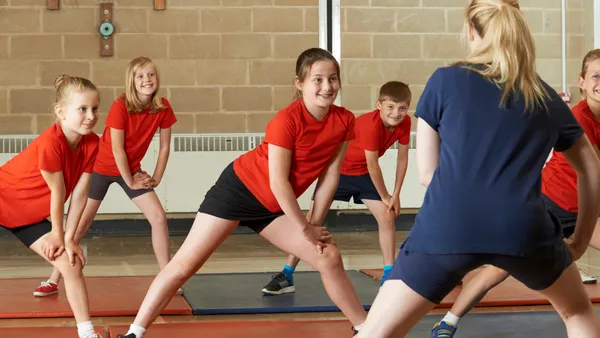Dive Brief:
- While districts must ensure all students and staff have access to high-speed wireless internet for successful remote learning, maintaining student engagement is also critical and requires collaboration between teachers and school leaders to provide meaningful and equitable learning opportunities, EdTech: Focus on K-12 reports.
- Engagement was a challenge for some districts. A survey of participating San Antonio schools, for example, showed 54% of high school students said they were less engaged during distance learning than they were during in-person classes, and 64% of parents of younger students said the same about their children.
- Enhanced professional development can instruct teachers on how to use technology safely, with intention, and in a way that builds supportive relationships and boosts student engagement.
Dive Insight:
Because content is being delivered through technology, it's less compelling and makes interactions more challenging. Shortly after closures, Taren Villecco, a 5th grade teacher at Ryan Elementary School in Boulder Valley School District in Colorado, said she was teaching to a "computer that can't speak back" and had to "just wait for students to respond."
To offset the dry nature of video lessons, some educators are bringing out their "inner entertainers" to grab students' attention. Jonte Lee, a Washington, D.C., high school chemistry teacher, records experiments in his kitchen and uses his refrigerator as his whiteboard. He engages with students where they are at — on social media, answering students' questions on Instagram in real time.
Kim Hendrick, principal at Whitwell Middle School in Tennessee, routinely makes videos in place of morning assembly to give students a sense of normalcy and lighten the mood.
In California, Mountain View Whisman School District is producing online lessons so teachers will be free to remediate students who have fallen behind. The remote learning team collaborates and uses technology in a new studio to produce engaging and intriguing curriculum content. These videos are similar to content used in flipped classrooms, where teachers record lessons that students watch as homework. The students then do their homework in class, around their peers and with a teacher’s assistance.
The youngest learners can be more difficult to engage from a distance, but there are ways to use platforms like Zoom and Google Meet to let students engage with each other. Continuing to use familiar songs and toys during the lessons also helps younger students establish routines. The John Hopkins School of Education suggests young students have time to move around before virtual class starts so they can get their wiggles out and focus better, and that they learn in a distraction-free environment without items like toys or their parents’ smartphones.
Although distance learning was a significant change from in-person classes, only 27% of teachers report receiving professional development for technology-based remote instruction in spring 2020, according to an August survey from the University of Virginia and the EdTech Evidence Exchange. Both teachers and administrators said informal and teacher-initiated professional learning was the primary method of teacher training.
With a majority of teachers and administrators believing the need for technology will increase over the next three years, teachers will need robust PD to navigate the shift in learning.













